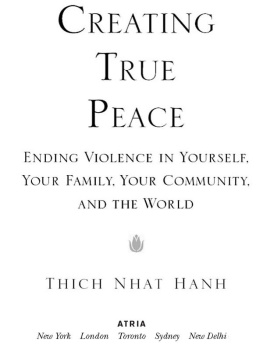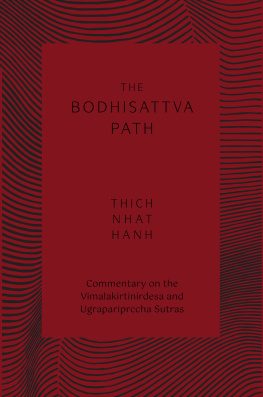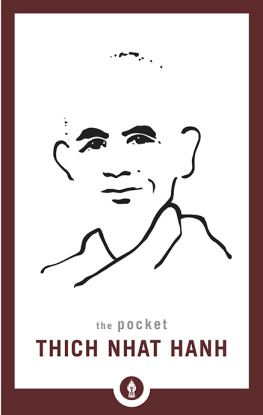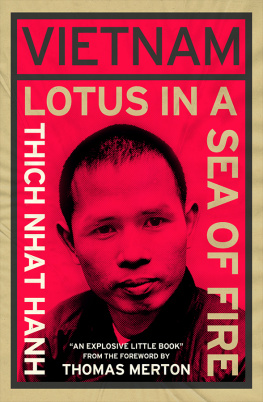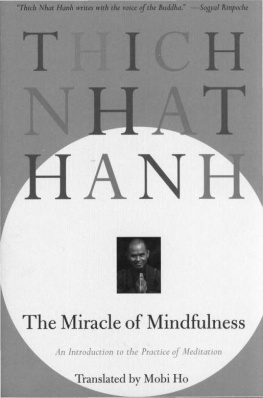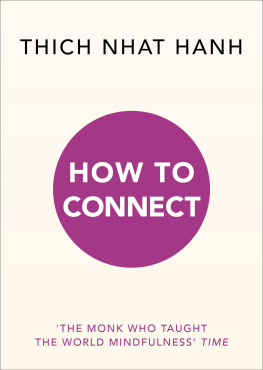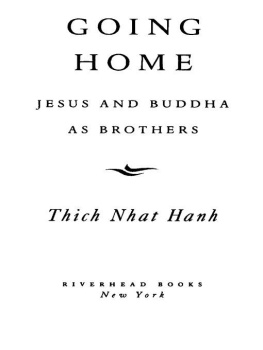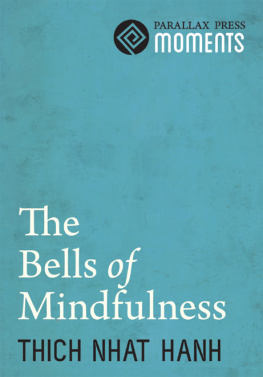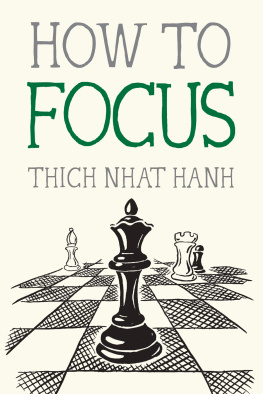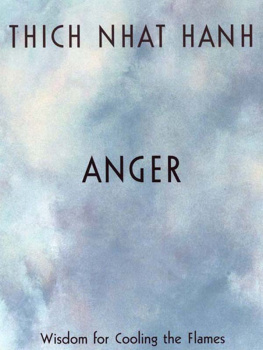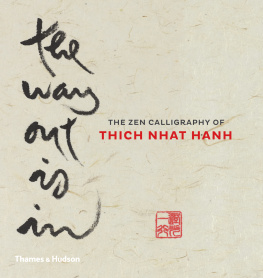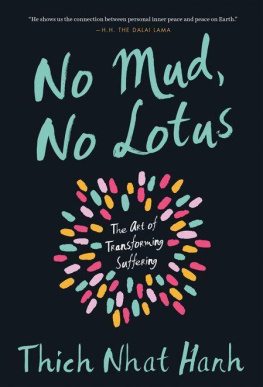

Thich Naht Hanh
HOW TO SEE
The Father of Mindfulness Irish Times

Contents
About the Author
Thich Nhat Hanh is a Vietnamese Buddhist Zen Master, poet, scholar and peace activist. During the Vietnam War his work for peace and reconciliation moved Martin Luther King to nominate him for the Nobel Peace Prize in 1967. He founded the Van Hanh Buddhist University in Saigon and the School of Youth for Social Service. He was exiled as a result of his work for peace but continued his activism, rescuing boat people and helping to resettle Vietnamese refugees. He has written many, very popular books, which have sold millions of copies around the world. He now lives in France where he founded a Buddhist community and meditation centre.
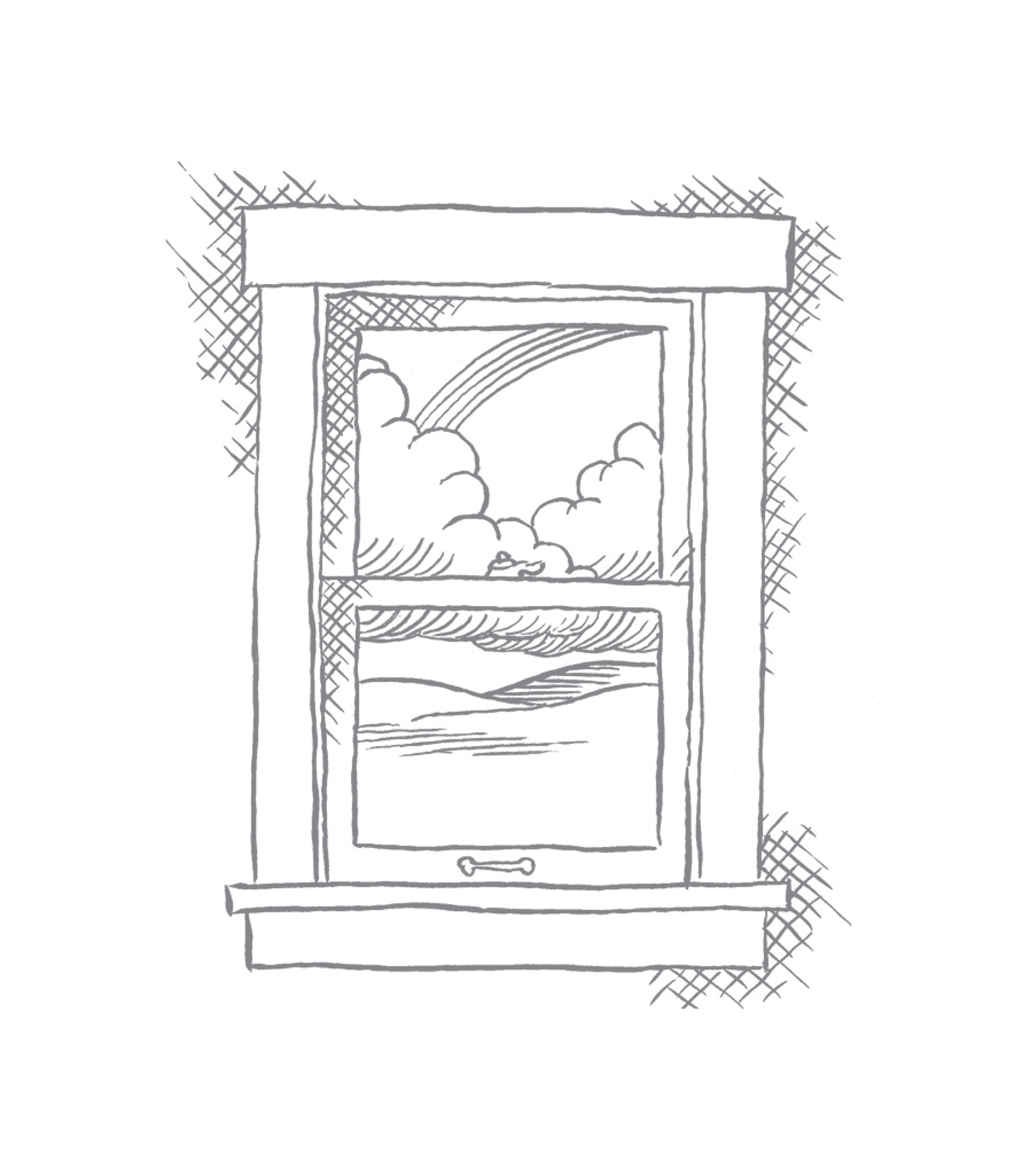

NOTES ON SEEING
If you are a poet, you will see clearly that there is a cloud floating in this sheet of paper. Without the cloud there can be no rain; without water, the trees cannot grow; and without trees, you cannot make paper. So the cloud is in here. The existence of this page is dependent upon the existence of a cloud. Paper and cloud are so close.
WATER REFLECTING
The clear still water of a mountain lake reflects the mountain and the sky with pristine clarity. You can do the same. If you are calm and still enough, you can reflect the mountain, the blue sky, and the moon exactly as they are. You reflect whatever you see just as it is, without distorting anything.

RIVER OF PERCEPTIONS
In each of us there is a river of perceptions. Perceptions arise, stay for a period of time, and cease to be. When our mind is not calm, we do not see clearly. Like the surface of a lake on a windy day, the image we see is distorted. Our perceptions are often erroneous, and cause us to suffer and cause others to suffer. It is very helpful to look deeply into the nature of our perceptions, without being too sure of anything. When we are too sure, we suffer. When we ask ourselves, Are you sure? we have a chance to look again and see if our perception is correct or not.
SIGN OR REALITY?
We are convinced that our perceptions are correct and complete, yet often they are not. In the Chinese character for perception, the upper part is sign or appearance, and the lower part is mind. When we perceive something, an image of that thinga signis created in our mind, and in many cases that sign is illusory. It is very easy to confuse our mental image of something with its reality. It is important not to be too sure of our perceptions.
THE SNAKE
Imagine you are walking in the twilight and you see a snake. You scream and run into the house to get your friends, and all of you rush outside with a flashlight. But when you shine your light on the snake, you discover it isnt a snake at all, its just a piece of rope. Mistaking the rope for a snake is a wrong perception. Mindfulness helps us avoid being caught by our wrong perceptions.
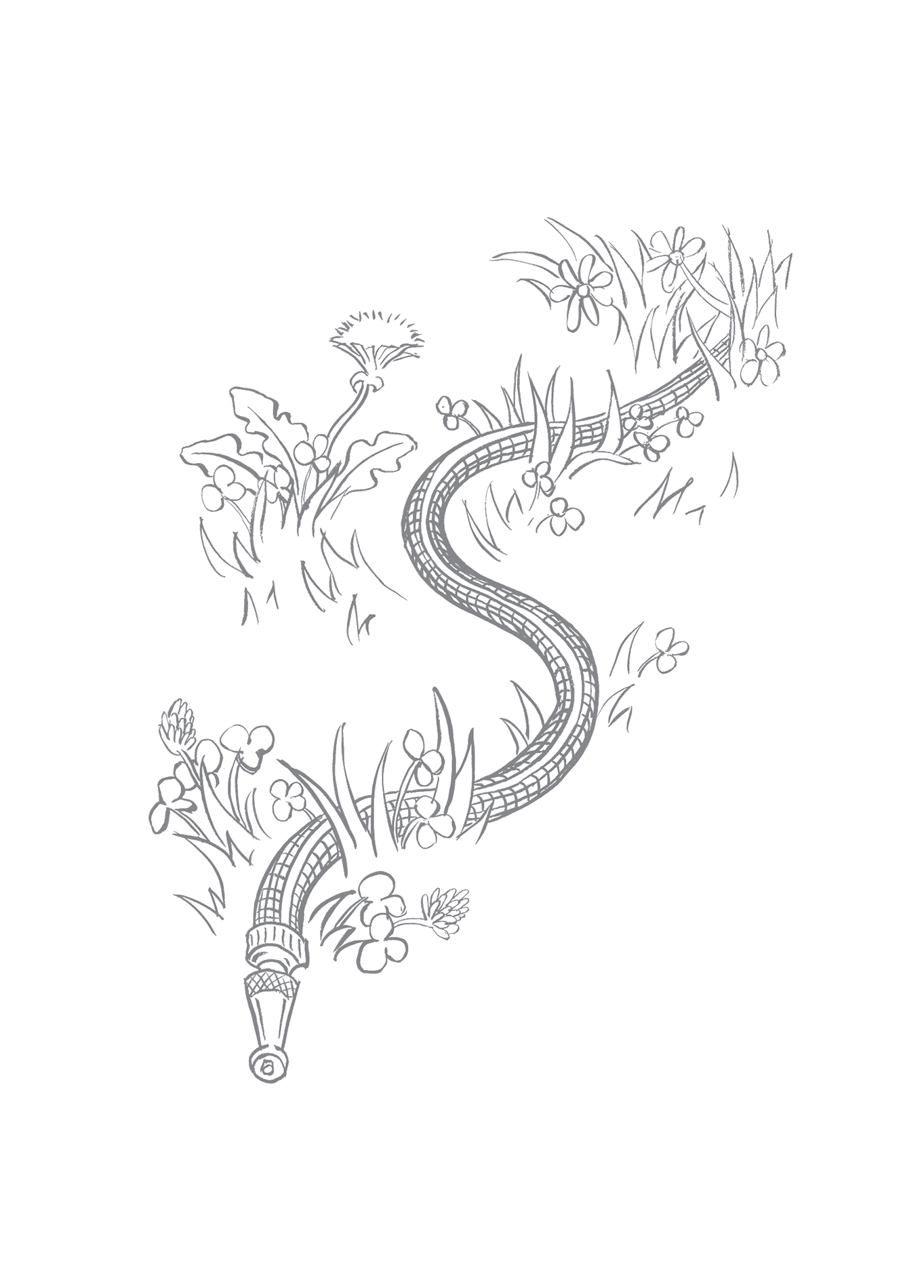
SEEING THE TRUE NATURE OF THINGS
The practice of full awareness is to look deeply in order to see the true nature of things and go beyond our inaccurate perceptions. Seeing a rope as a snake, we may cry out in fear. Fear is a feeling brought about as a result of our wrong perception. Our perceptions are often inaccurate and can bring about strong feelings and reactions and cause much unnecessary suffering. Once we have seen the true nature of the object of our fear, our fear will vanish.
THE SOURCE OF OUR PERCEPTIONS
The source of perception, our way of seeing, lies in our unconscious mind. Most of our perceptions are erroneous. They carry with them all the errors of subjectivity. We praise or blame, are happy or complain depending on our perceptions. Our perceptions are made of many things, including our afflictions, such as craving, anger, and ignorance, as well as our habit energies and past experiences. Whether we are happy or whether we suffer depends largely on our perceptions. It is important to look deeply into our perceptions and recognize their source.
GOOD OR BAD LUCK?
One day a farmer went to the field and found that his horse had run away. The people in the village said, Oh, what bad luck! The next day the horse returned with two other horses and the village people said, What good fortune! Then the farmers son was thrown from one of the horses and broke his leg. The villagers expressed their sympathy, How unfortunate. Soon after, a war broke out and young men from the village were being drafted. But because the farmers son had a broken leg, he was the only one not drafted. Now the village people told the farmer that his sons broken leg was really good luck.
It is not possible to judge any event as simply fortunate or unfortunate, good or bad, as this age-old story shows. You must travel throughout all of time and space to know the true impact of any event. Every success contains some difficulties, and every failure contributes to increased wisdom or future success. Every event is both fortunate and unfortunate. Fortunate and unfortunate, good and bad, these concepts exist only in our perceptions.
THE CLOUD IN YOUR TEA
Imagine a cloud transforming herself into rain. The rain will nourish many trees and plants. We should be able to recognize the cloud in its new forms as trees and plants of many kinds. Looking deeply into the rain, ice, or snow, we can recognize the cloud. Looking deeply into your tea, you can recognize the cloud. When you drink your tea mindfully, you know you are drinking a cloudhow wonderful! When children eat an ice cream, they are also eating a cloud. This is the way we train ourselves to look at reality, with the eye of formlessness, signlessness; it means transcending the appearance, the sign, to touch the ultimate reality. If you dont have the eyes of signlessness you cannot recognize the cloud in your tea, in your ice cream, in the rain, or in the vegetables. We can all train ourselves to look with the eyes of signlessness.
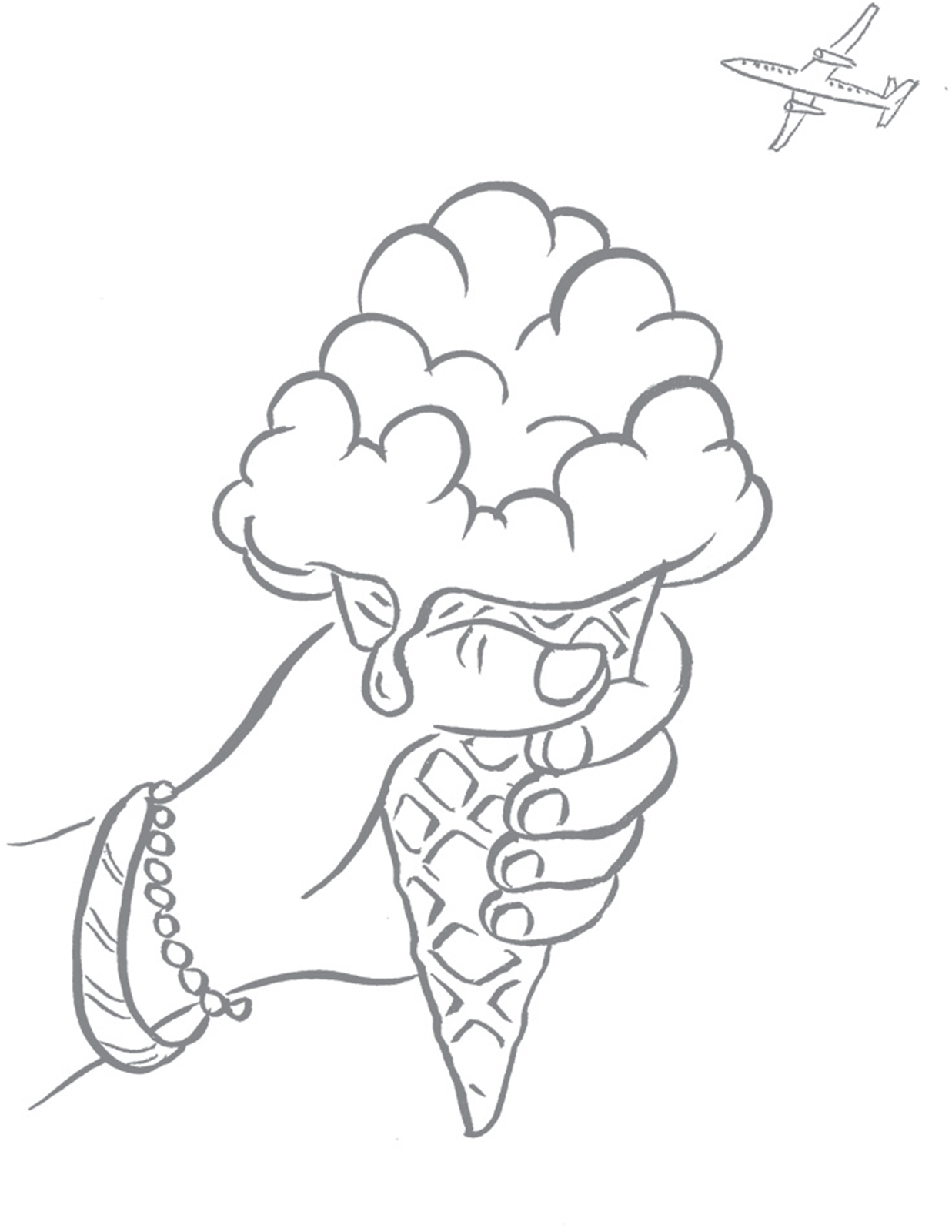
LOOKING INTO THE ROSE
Suppose we look deeply at a rose. With some concentration and mindfulness, we can see that the rose is made of only non-rose elements. What do we see in the rose? We see a cloud, because we know that without the cloud, there would be no rain, and without the rain, the rose couldnt grow. So a cloud is a non-rose element that we can recognize if we look deeply into the rose. Next, we can see sunshine, which is also crucial for the rose to grow. The sunshine is another non-rose element present in the rose. If you took the sunshine and the cloud out of the rose, there would be no rose left. If we continue like this, we see many other non-rose elements within the rose, including the minerals, the soil, the farmer, the gardener, and so on. The whole cosmos has come together to produce the wonder we call a rose. A rose cannot be by herself alone. A rose has to inter-be with the whole cosmos. This is the insight we call interbeing. When looking at a rose, if we can see all the non-rose elements that make up the rose, then we can truly touch the reality of the rose. No matter what we look at, if we can see that it is made up of everything in the universe that is not itself, then we touch the true reality of that thing, its nonself nature. There is a Zen proverb: Before I began to look deeply, mountains were mountains and rivers were rivers. Once I began to look deeply, mountains were no longer mountains and rivers were no longer rivers. Now, as I have practiced looking deeply for some time, mountains are again mountains and rivers are again rivers. When we see the signless nature of phenomena, we see things as they are.
Next page

